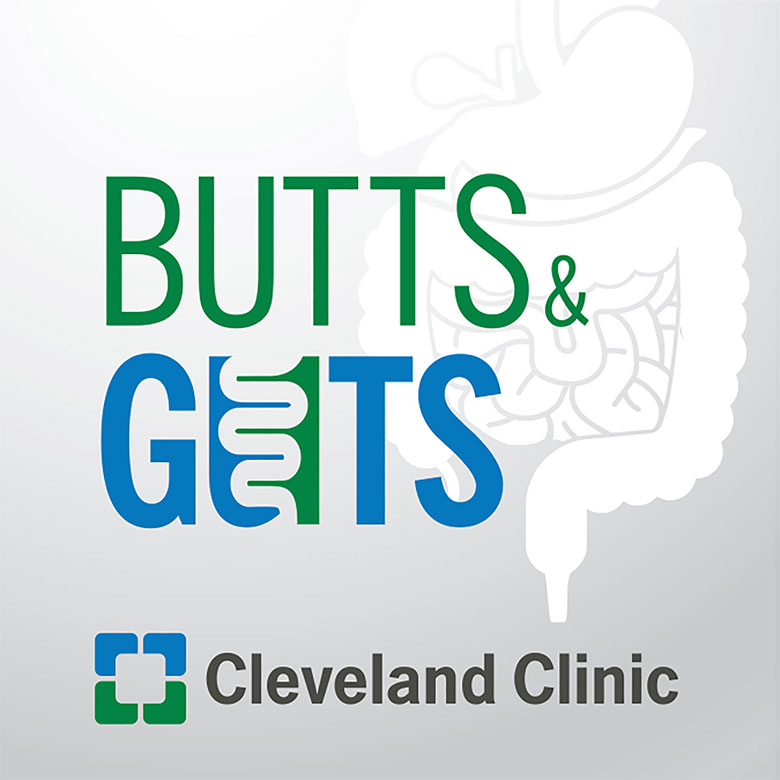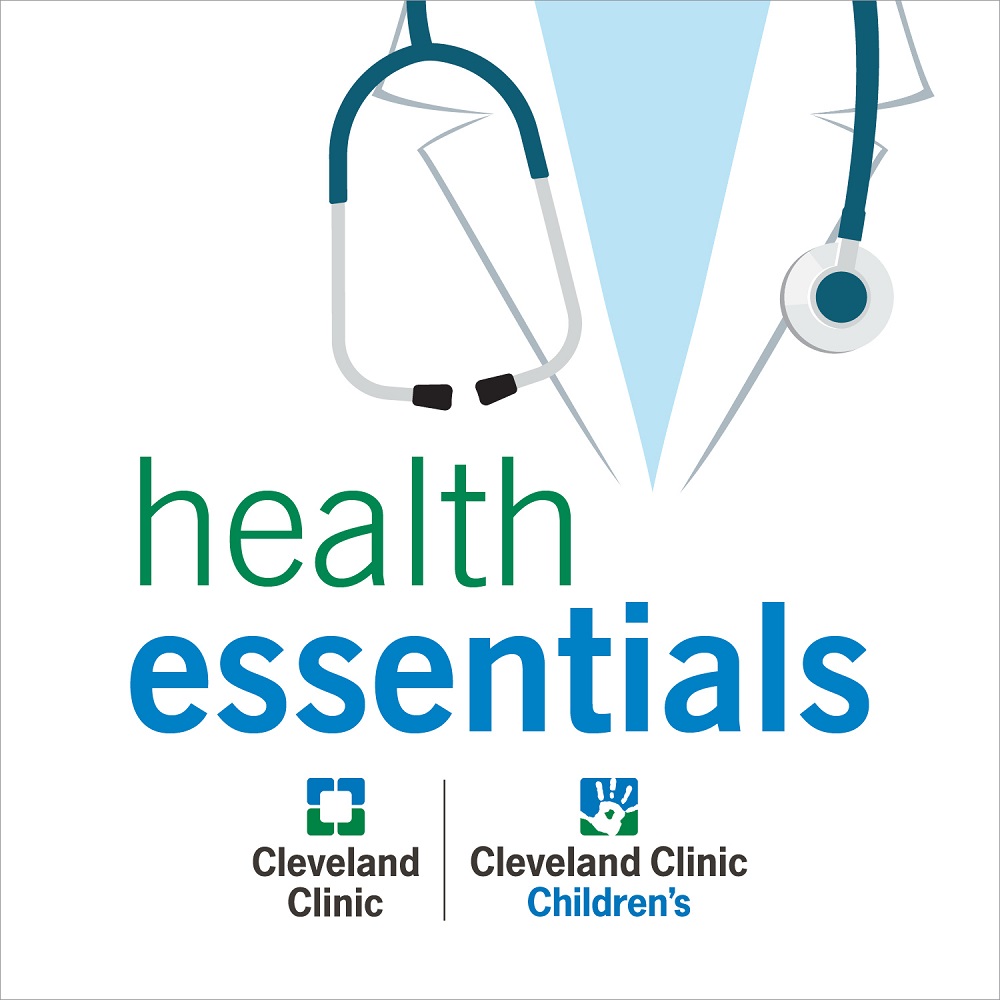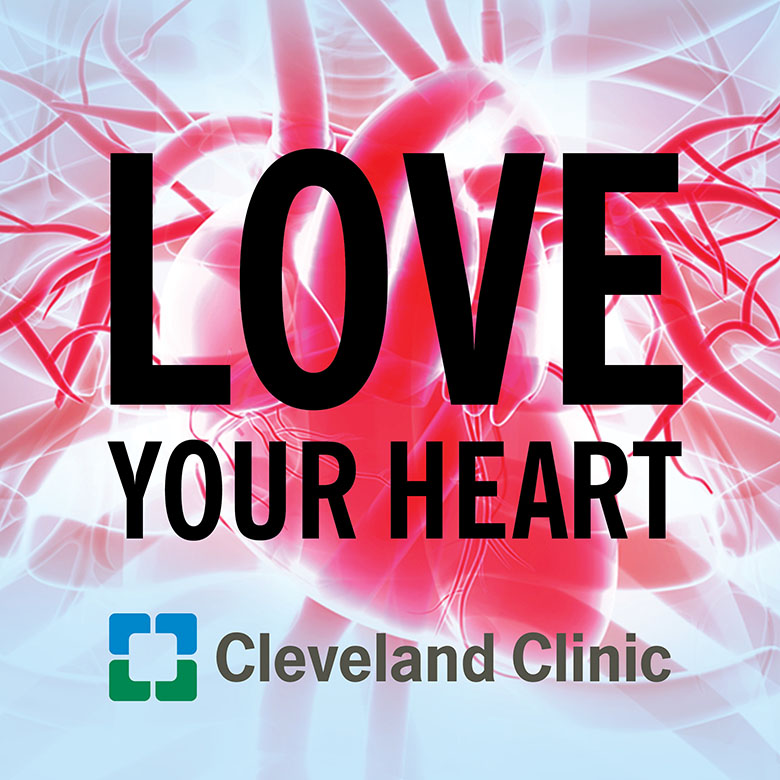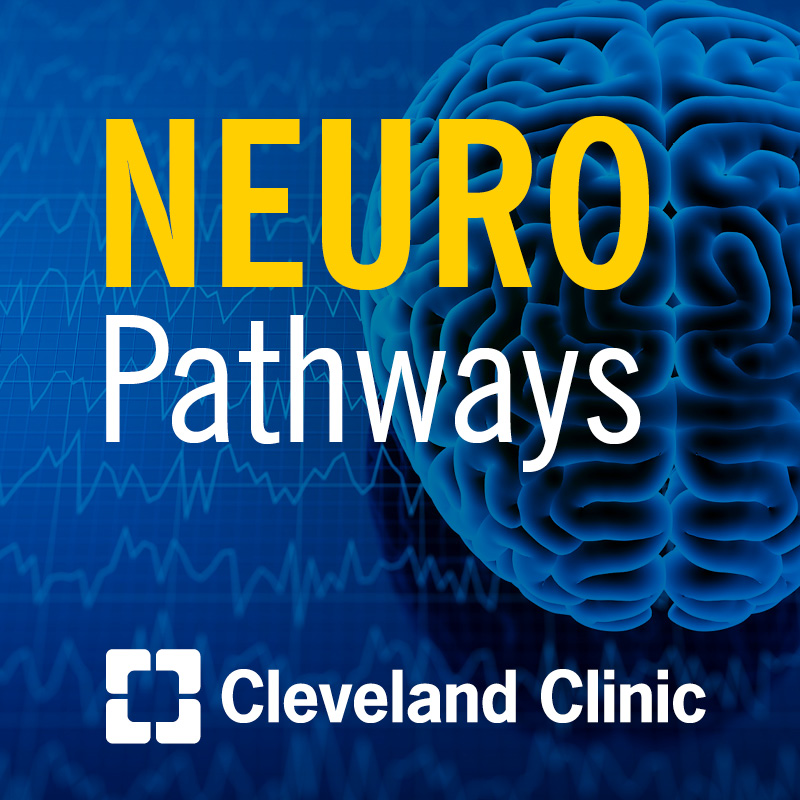A Discussion on Marfan Syndrome and Connective Tissue Disorders - Part II
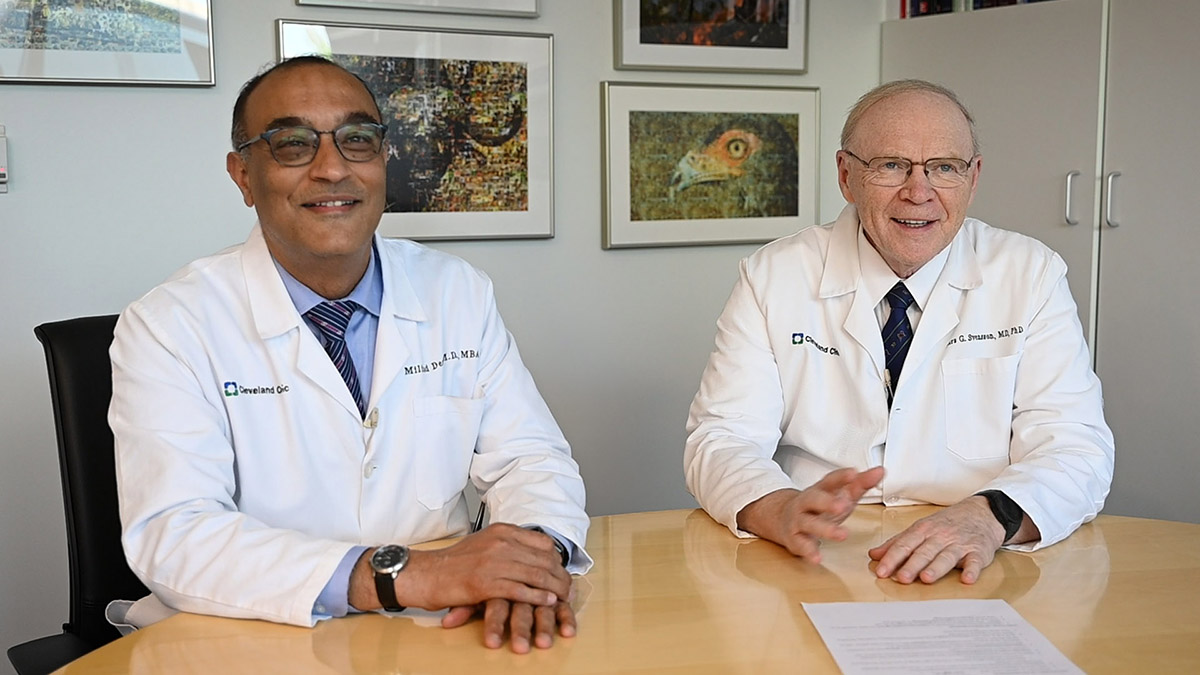
Connective tissue disorders like Marfan, Loeys-Dietz, and Ehlers-Danlos syndromes can affect the function of the heart and aorta. Cleveland Clinic experts discuss surgical options, recovery and expected outcomes for those with connective tissue disorders.
Looking to refer a patient? Please reach out to our Physician Referral team Mon. - Fri., 8 a.m. - 5 p.m. (ET) at 855.751.2469.
Meet the Presenters:
Lars Svensson, MD, PhD – Chief of the Sydell and Arnold Miller Family Heart, Vascular and Thoracic Institute
Milind Desai, MD, MBA – Vice-Chair of Education, Heart, Vascular and Thoracic Institute
Learn more about the Cardiovascular Marfan & Connective Tissue Clinic.
Listen to Part I of this podcast discussion.
Subscribe: Apple Podcasts | Podcast Addict | Buzzsprout | Spotify
A Discussion on Marfan Syndrome and Connective Tissue Disorders - Part II
Podcast Transcript
Announcer:
Welcome to Cardiac Consult, brought to you by the Sydell and Arnold Miller Family Heart, Vascular and Thoracic Institute at Cleveland Clinic. This podcast will explore the latest innovations, medical and surgical treatments, diagnostic testing, research, technology and practice improvements.
Lars Svensson, MD:
Today, we're going to talk about Marfan syndrome and connective tissue disorders. I'm Lars Svensson. I am the Chief of the Heart, Vascular and Thoracic Institute (HVTI). With me today is Milind Desai. He's our Vice Chair for HVTI in Education. He has world-recognized expertise in cardiomyopathies, how to treat patients with myectomies, and doing some groundbreaking international trials. But also, he has been very involved with connective tissue disorders and the genetic analysis of these patients. Thanks for joining me, Milind.
Milind Desai, MD, MBA:
Thank you for having me, Dr. Svensson.
Lars Svensson, MD:
Let's talk a bit now about the actual surgical options. Historically, the operation of choice was a composite mechanical valve replacement. Many years ago when I was in Houston, I wrote up 348 patients having that, and that at the time was the biggest series. The problem is obviously with mechanical valves, patients have to be on Coumadin. We did a recent study that we published a year ago. We looked at other options for treating patients with mechanical valves other than Coumadin, and we used Eliquis. Unfortunately, it did not work out. So, at this stage we don't think that, at least on the horizon, there is any medication to replace Coumadin for mechanical valves.
That is the go-to valve and the results for composite valve grafts is very good. In fact, the stroke rate over time is lower than an isolated mechanical aortic valve replacement. The problem is the Coumadin. Obviously, a lot of young people who present with Marfan are childbearing, young kids and so on. That's always a concern of it.
The re-implantation operation is a modification of the one that Tirone David from Toronto described. The modification that I introduced with the idea of having better long-term durability is reducing the annulus size down to what the expected annulus size is for a certain body surface area. In other words, patients with Marfan are obviously tall, but on top of that, the annulus, which is where the leaflets are attached in the aortic valve, is often very big. It can be like four centimeters when it should be, let's say, 2.3 centimeters. Part of the operation is bringing that down to a normalized size.
The other thing that was noted in the early experience with re-implantations is that holes can occur into the chambers of the heart when there's not buffering of those sutures that anchor the tube graft outside the valve. When we do the operation, we free up the whole aortic valve around the entire circumference. That whole valve has to sit in a tube, so it doesn't stretch out again or pop out from underneath the graft. The whole valve is wrapped in this tube. Then we tie down the sutures to the body surface area and re-implant it. But those sutures that we tie down have pledges on them. Those are little stoppers if you like. The stitches don't tear through the tissue because it's very fragile in patients with Marfan, and Loeys-Dietz is even more so. You have to be careful that you don't make holes in the heart where you don't want this. “Fistulae” is what we technically term them or various other spaces or leaks from the re-implantation. Those are two of the aspects of the modification.
Now, what are the results? A couple of years ago, we wrote up all our connective tissue disorder patients. 214 operated here at the Cleveland Clinic with a re-implantation operation. The biggest series in the world, no operative deaths and the long-term survival was excellent. Also on top of that, the freedom from re-operation in the patients with connective tissue disorders was 97% at I think it was 12 years. It might've been 15 years in that group.
But anyway, the point is we were always worried with patients with Marfan that the tissue was very fragile, including the leaflets, that they would not stand up to a re-implantation operation. It has been shown now that our fears, our concerns about that do not hold true. In other words, in patients with connective tissue disorders, the chance of a long-term failure at about 15 years is 3%, really holding up very well. Obviously, patients then don't have the mechanical valve, they don't have to be on Coumadin and their risk of stroke is low, their risk of clots forming on them is lower and the risk of infection on the valve is also lower. So, the long-term results are very good with re-implantation in both patients with Marfan and Loeys-Dietz Syndrome.
Let's talk a bit about follow-up of patients who've had their surgery and what medications you recommend or what you do for your patients as far as beta blockers, Losartan, monitoring, how often you follow your patients, MRIs, et cetera.
Milind Desai, MD, MBA:
That's an important point. This is a lifelong disease and it's not a one-and-done situation where you can be lost to follow up. We see these patients, we try to see them immediately in the post-op setting. They obviously have to be seen at six weeks or thereabouts. In the big picture, we try to see them annually with imaging, precise imaging. That I tell patients is we need to have touch points at periodic time points, typically annually, because we need to be doing imaging that can be compared on similar scanners, similar folks doing it, imaging it.
You obviously have to look at the graft, but also the valve, and make sure it is holding still and not leaking. If it is leaking, it is no more than mild or so. We clearly do echo. We are liberal users of CT for follow-up because the resolution for aortic follow-up is excellent. Often, if the patient is younger, it is important to recognize that sequential CTs may provide a lot of radiation. Of course, in our CT scans, we are very stringent with our radiation dose. The radiation doses are typically not very high here, some of the lowest on the planet. But even then, there may be younger folks where we put them on a serial MRI imaging process. Typically, we do it every year or thereabouts to make sure the other parts of the aorta are stable. As Dr. Svensson mentioned, sometimes there may be aneurysmal degeneration. Not very frequently seen, but often enough that put them on a follow-up protocol.
As was alluded, they may have lens problems, other spinal problems, pulmonary problems. It is important that these patients also periodically see their ophthalmologist, who is experienced in dealing with connective tissue disorders, as well as orthopedic surgeons who know how to handle these disorders.
The other aspect is tight control of their blood pressure. We call that impulse control. Heart rate and blood pressure, they are two of the drivers that can potentially aggravate a fragile aortic ecosystem, for the lack of a better term. The two classes of drugs, ARBs (Losartan, Cozaar) and beta blockers (Metoprolol, Atenolol), we use them liberally. I always tell patients to maintain their ideal heart rate in the fifties and sixties and blood pressure according to guidelines. Maintain a tight control of their comorbidities, obesity, diet. Don't forget the other things simply because you have an aortic aneurysm. The key message is to stay connected with us, with a center of excellence.
Lars Svensson, MD:
Well thanks, Milind. I think those are very important points for long-term follow-up of patients. Let me just also mention some of the comorbidity things, as Milind mentioned, orthopedics and eye follow-up and specialists in managing those patients, we certainly have them here. But something that’s of great interest to Milind is the cardiomyopathy. Patients with connective tissue disorders can develop intrinsic left ventricular dysfunction. In other words, a cardiomyopathy irrespective of whether the patient has valve or heart disease. That is a feature of Marfan. It's fortunately rare that we see that but Milind, I'll give you a chance to comment about that.
The other problem is we have to follow the mitral valve because that may, over time, get involved. Also something that is not often recognized is that we get baseline pulmonary function tests on all our patients. Usually, we see some dysfunction. The breathing tests, they're usually not bad, but over time patients with particularly Marfan do potentially develop COPD or emphysema. So, it's something to track over time.
But Milind, let's just talk a bit about the cardiomyopathy. I know of just a couple of patients we've had to do heart transplants on for the cardiomyopathies. It's pretty rare. Some comments about that?
Milind Desai, MD, MBA:
It is rare, mercifully, but also it may very well be in the past, like you alluded to, the life expectancy was lower, so, maybe there was not enough time for these other comorbidities to accrue. Now that the Marfan and connective tissue patients are living longer, it might be important to keep a close eye on all these other comorbidities, other diseases that may crop up.
So again, mercifully, right now, the way I look at it in a Marfan or a connective tissue patient is the aortopathy is by far and about the most common presentation. Then, a small proportion have concomitant mitral valve disease, and even much smaller proportion have a concomitant cardiomyopathy or may develop downstream cardiomyopathy. But this underscores the importance of us being on top of their follow-up. Not just imaging of the aorta, but looking at their echoes and periodic MRIs to make sure cardiomyopathy does not creep in, and clearly pay attention to the mitral valve.
Lars Svensson, MD:
Great. One other thing. While you were talking, I was just thinking about this. Patients with Marfans also have a tendency to have a prolonged QT interval, which is something that can and potentially needs to be treated. It's something to keep an eye on. There was a paper many years ago. I used to get 24-hour Holter's on all my Marfans patients because I thought that that was potentially a problem, and has turned out that occasionally that is a problem.
So, Milind, you mentioned you're three times more likely to survive for most heart surgeries if you come to the Cleveland Clinic. That's based on comparison with the average outcomes in the United States for heart surgery using the STS (Society of Thoracic Surgeons) criteria of observed to expected [mortality]. Simplifying the statistics, that’s three times more likely to survive than any other average hospital in the United States.
Obviously, here we haven't had any deaths, fortunately, for Marfan and Loeys-Dietz re-implantation surgery. As I said, we do see a lot of patients who, unfortunately, have had previous operations, including for aortic dissection, and then the surgery gets much more complicated. You have to then look at aortic arch surgery, potentially barraged artery surgery, descending thoracoabdominal surgery, often reoperative surgery, and that in itself can require multiple operations over time. Any comments about why patients with connective tissue disorders should come to the Cleveland Clinic?
Milind Desai, MD, MBA:
Yeah, I think you mentioned, the point is this is a team sport. Managing this complicated group of patients is a team sport. It requires key players in various aspects of management: cardiology, imaging, cardiac surgery, as well as others like orthopedics, infectious disease, et cetera. The ability to mobilize a team that works at the highest level in a highly efficient manner, no place does it better than the Cleveland Clinic, hands down, no question about it.
Another important thing we need to recognize, another powerful thing I tell patients is, if you are a Marfan patient within evolving aortopathy and you get into a program of periodic follow-up and at a place like the Cleveland Clinic, including periodic imaging, and you take our advice, the risk of you presenting with a downstream dissection before we would have electively fixed your aortopathy is extremely low. It's extremely low.
I think that's something important that speaks to the preemptive, proactive approach that we take and are able to mobilize the team. Now, there are patients who we may see for the first time ever in the setting of an acute emergency. Our ability to auto-launch you to our ICUs, to take you to the OR, to mobilize 24/7/365, no matter rain or shine, is better than any other place on the planet.
Preemptive surgical, as well as in the midst of a crisis, our outcomes speak for themselves. You already mentioned about the surgical outcomes, but what it takes to get to that surgical outcome, this is a special place for that.
Lars Svensson, MD:
So, Milind, just on that final point, you looked up all our patients who had surgical procedures for Marfan syndrome, and this was not just re-implantations, but all procedures which far exceeded any of the other leading institutions or those that used to lead in the field of Marfan. We by far now have the biggest series of patients who have undergone procedures for Marfan. Do you want to comment a bit about that? It was something like 1,100?
Milind Desai, MD, MBA:
Yeah, a little over 1,100 patients. Again, as I alluded to, the outcomes of preemptively done surgery, we see you, we evaluate you, we say, "It is time for you to have surgery." The outcomes were excellent, excellent, excellent. Even the ones that came here emergently, their outcomes were, of course, they're not going to be as good as the preemptive surgery if you are in the midst of a dissection or a rupture or what have you. But they were substantially better than the rest of the population.
The most important thing I learned from that paper was, as I alluded to earlier, more than 50% of them, their aorta at the time of their rupture was lower than what the guidelines would've recommended as a threshold. To me, that reflects that we have to be a little bit more aggressive in our mindset as we are evaluating these patients. Look for risk factors more aggressively and not perhaps wait till five centimeters. Especially if you are at a place like here, perhaps jump into a preemptive operation slightly earlier. Guidelines are there, but we have to be very nuanced about how we apply those guidelines, especially in a place like this.
Lars Svensson, MD:
For you who are physicians who have been listening to this episode and have questions or would like input on your patients, we're always available. We do a lot of research on our patients, and we are doing a lot of research on, for example, tissue. I mentioned a bit about looking at potential new markers for inherited connective tissue disorders. That's a whole separate subject. A lot of interesting new mutations are always being discovered. We've got some that we seem to be seeing a trend for causing aortic root aneurysms or thoracic aortic aneurysms. So, there’s a lot happening in that area.
We're doing a lot of research on options and what really makes the re-implantation operation, the modification we use, more durable. As you heard, the results are really outstanding long-term with a very low risk of death with the operation. In fact, zero for the 214 patients with Marfan or connective tissue disorder we recently studied. The other thing I'd like to ask Milind just to comment on if you refer patients, how we like to work with you and return patients to you.
Milind Desai, MD, MBA:
This is a team sport and patients get referred to Cleveland Clinic from all over. You, the referring physicians, still are the quarterback of the patients. We take care of patients, we work together as a team. These patients are your patients. We co-manage and we are always there, available for questions, opinions.
You are following the patients, and they may initially not want to travel and we offer a second opinion service, where we look at the data and then we say, “Okay, this is how we would co-manage.” Or we recommend at certain times, “It is time for you to come here, establish care, and then take things from there.” The point here is, with evolving modern technology, and understanding the importance of precision in imaging, and having the right information for the patient as well as for the referring physicians so that we can take care of these patients in the best possible way, the most important thing is that this is a team sport and we are in this together.
Lars Svensson, MD:
So let me just make a comment that any patient who comes here for any heart surgery, not only for connective tissue disorders, is seen by a cardiologist. If the indications are potentially for surgery, then the patients are seen by a cardiac surgeon also. There's always two of us. Then we discuss with patients whether surgery is appropriate or not. Today I saw a couple of patients in clinic and both patients, we had discussions about surgery and timing of surgery, a discussion between cardiology and myself. That is occurring all the time.
Typically, patients come in a day or two before surgery. They may or may not have the cardiac cath here, but certainly as I mentioned, the echo, the CAT scans, the pulmonary function tests, and then we do the operation. Most of the patients who have re-implantation operations go home on the fourth to sixth day, depending on whether they have atrial fibrillation. We check the patients on two days after discharge, and if everything's okay, then we recommend that patients follow up with you back home 7-10 days after surgery. That's because we put patients on diuretics and various medications, but we think it's very important they return to you and that they are within your hands, and you adjust medications as you see fit based on how the patient is doing. Then, as Milind said, follow up with echoes, MRIs or CAT scans over time.
Thank you very much for being part of this Cardiac Consult discussion. Again, we're always available to help you with your patients. Thank you.
Milind Desai, MD, MBA:
Thank you very much.
Announcer:
Thank you for listening to Cardiac Consult. We hope you enjoyed the podcast. For more information or to refer a patient to Cleveland Clinic, please call 855.751.2469. That's 855.751.2469. We welcome your comments and feedback. Please contact us at heart@ccf.org. Like what you heard? Subscribe wherever you get your podcasts or listen at clevelandclinic.org/cardiacconsultpodcast.
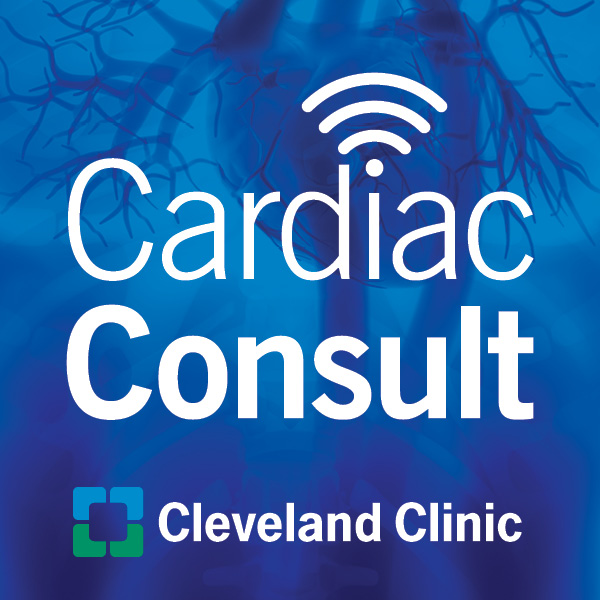
Cardiac Consult
A Cleveland Clinic podcast exploring heart, vascular and thoracic topics of interest to healthcare providers: medical and surgical treatments, diagnostic testing, medical conditions, and research, technology and practice issues.
